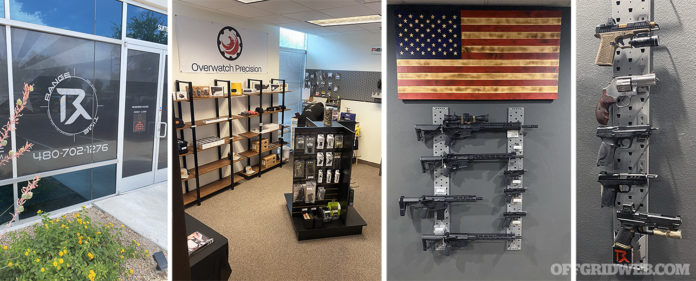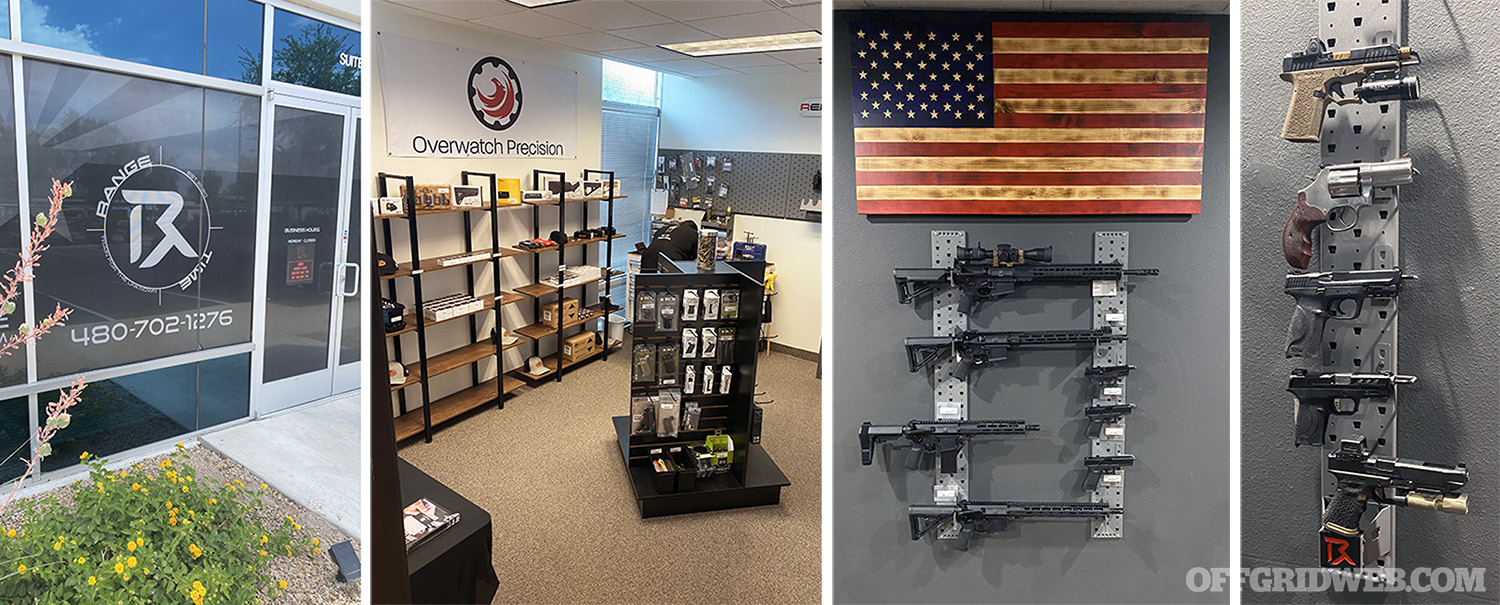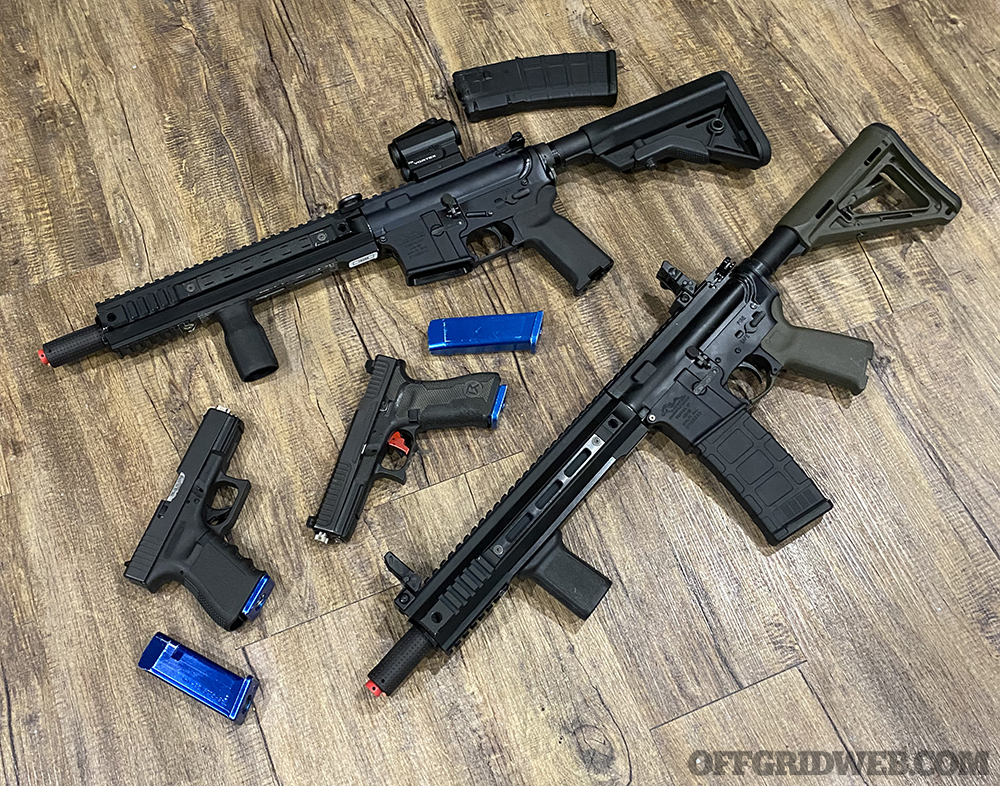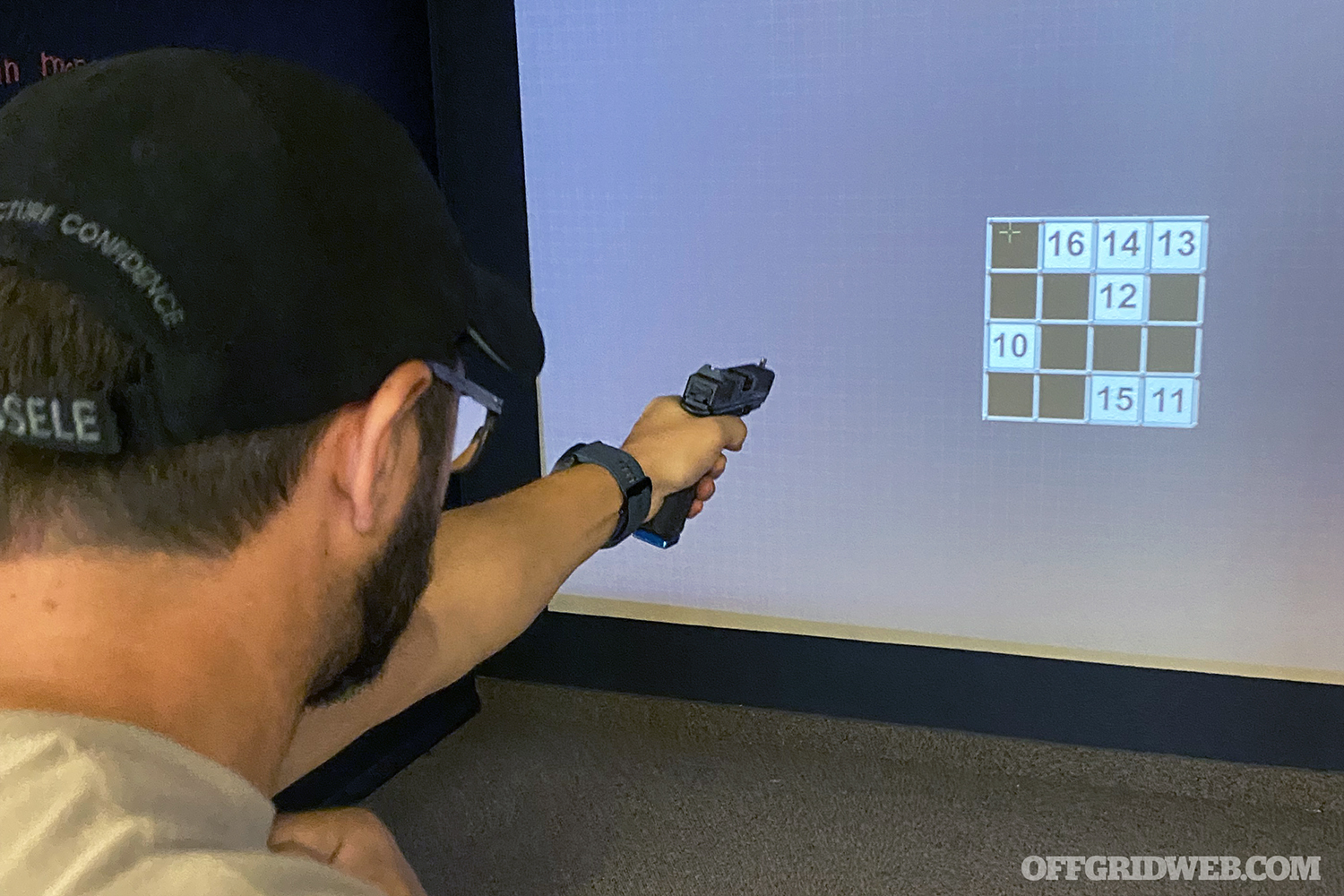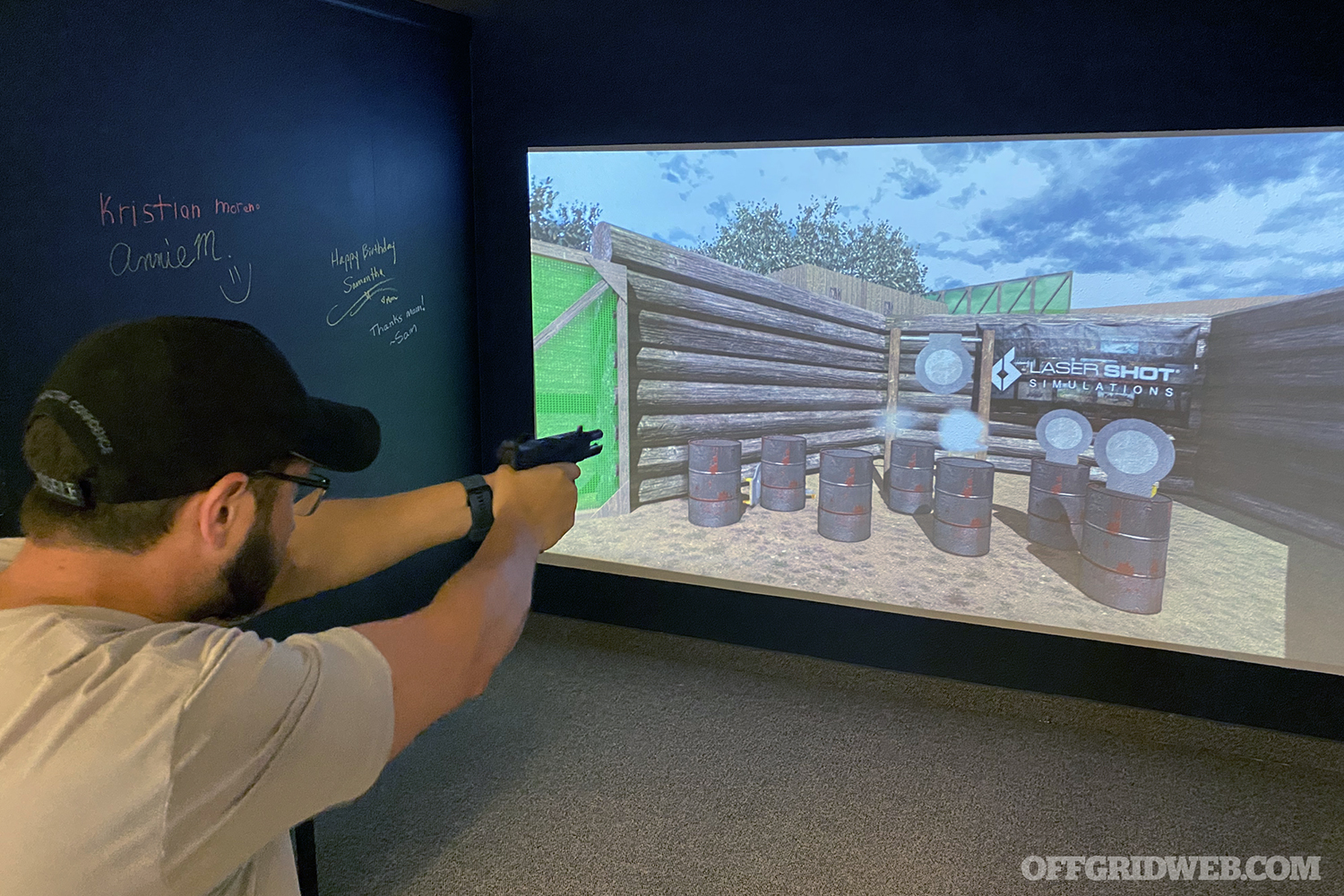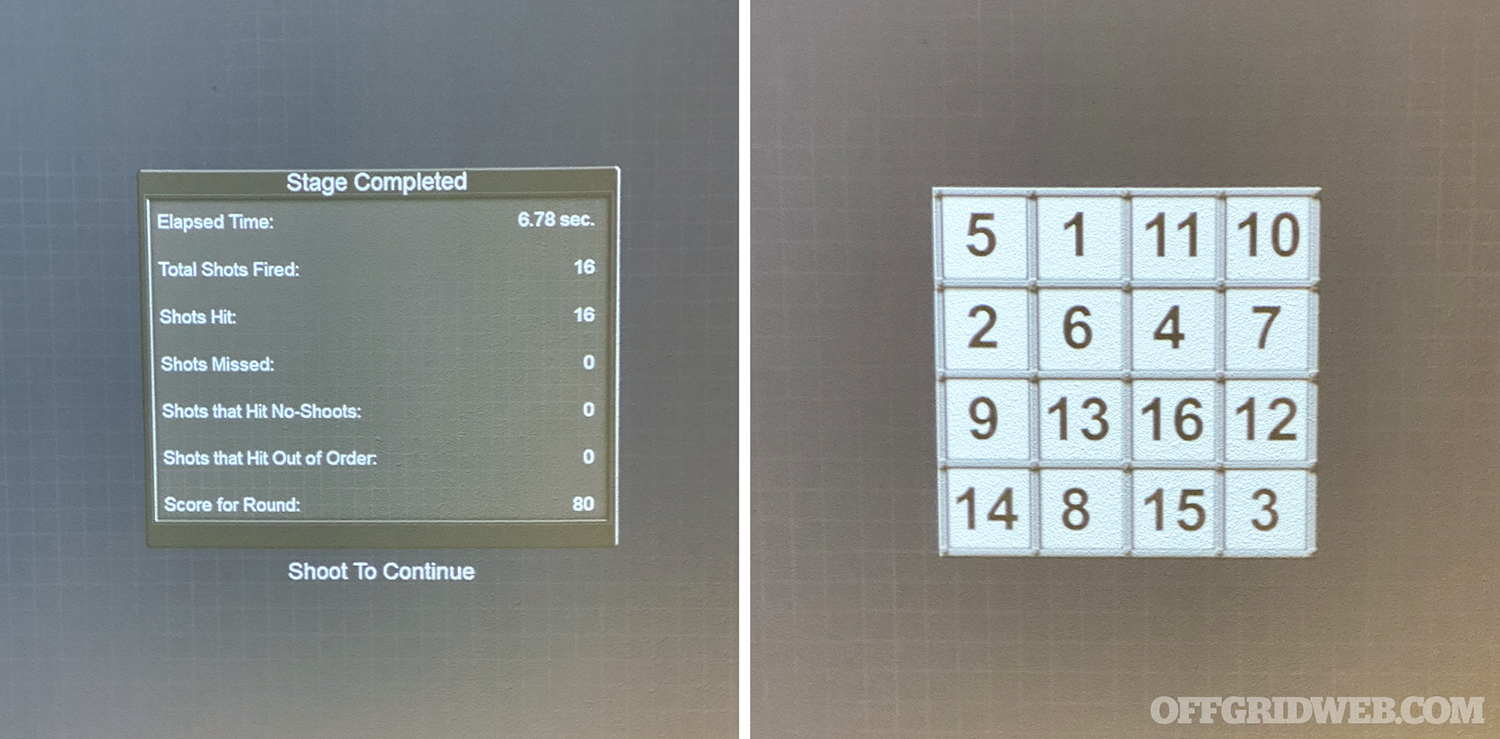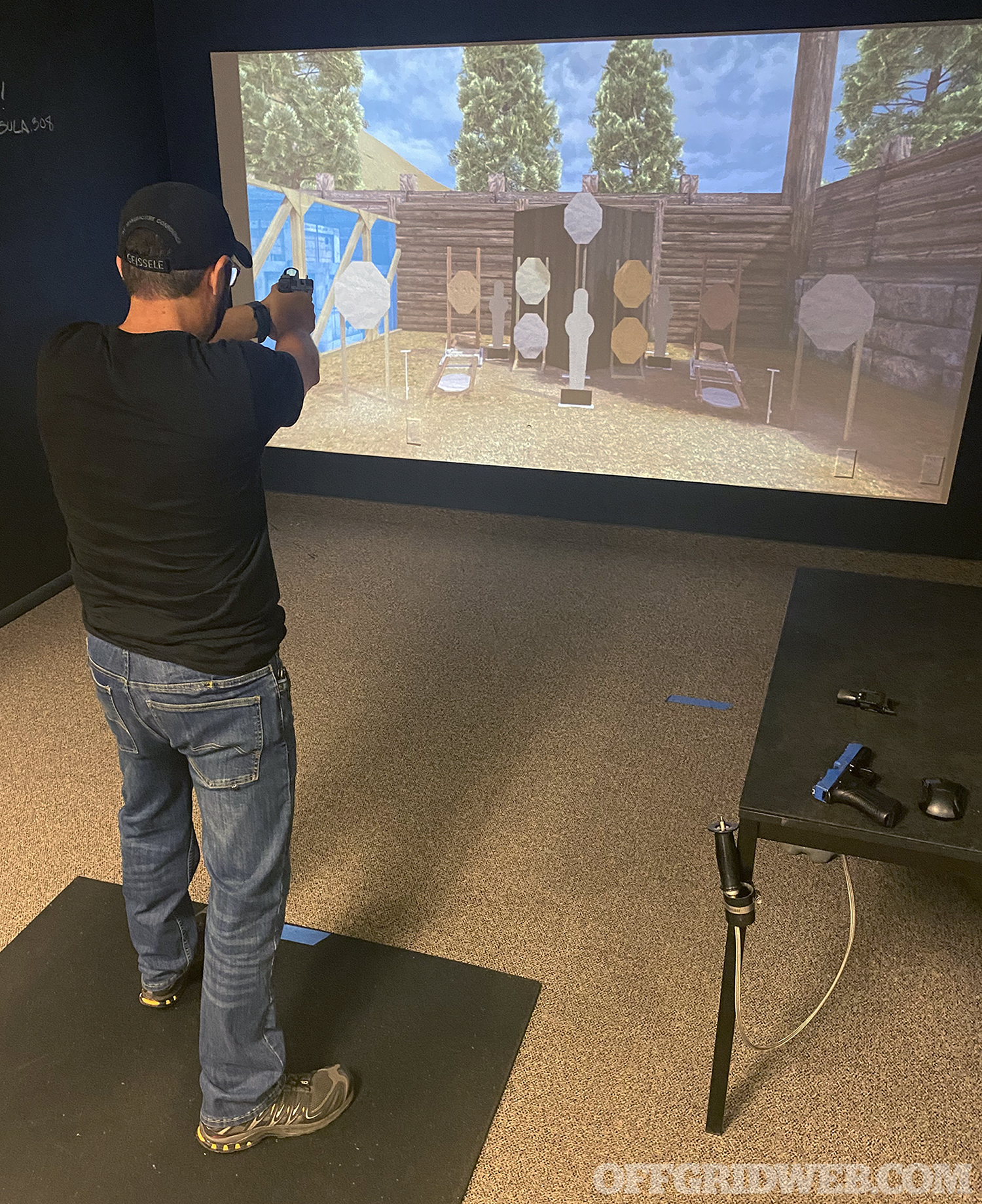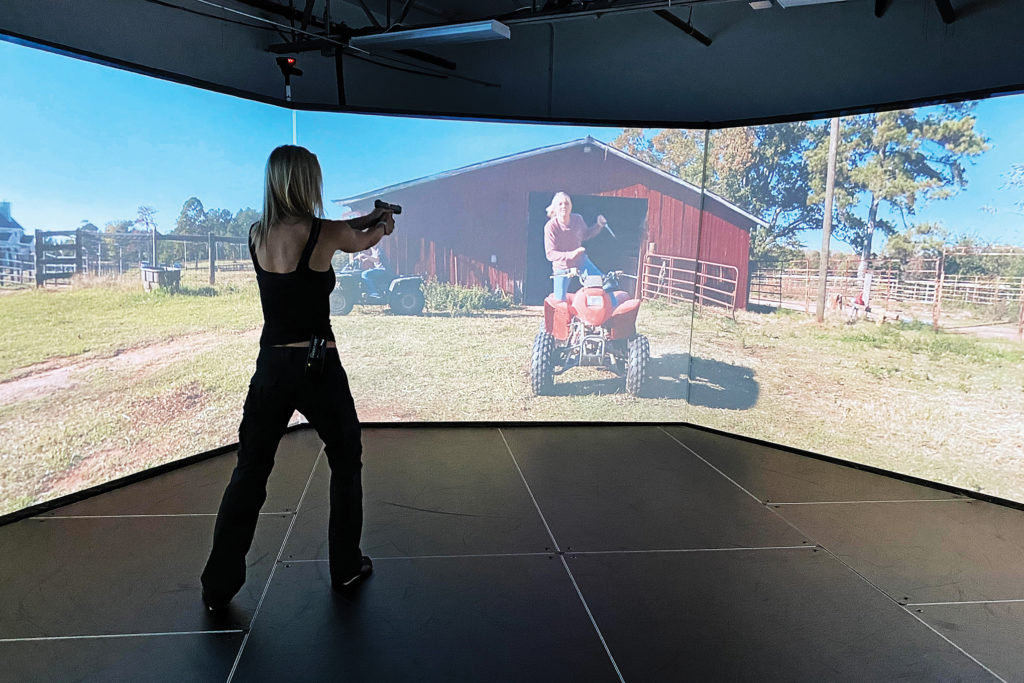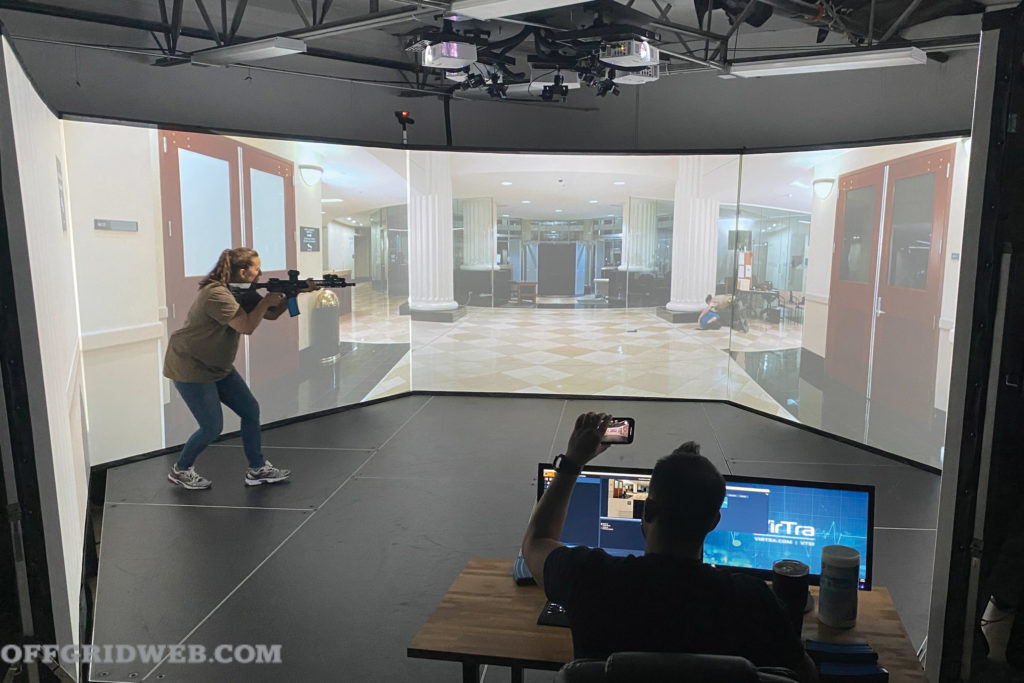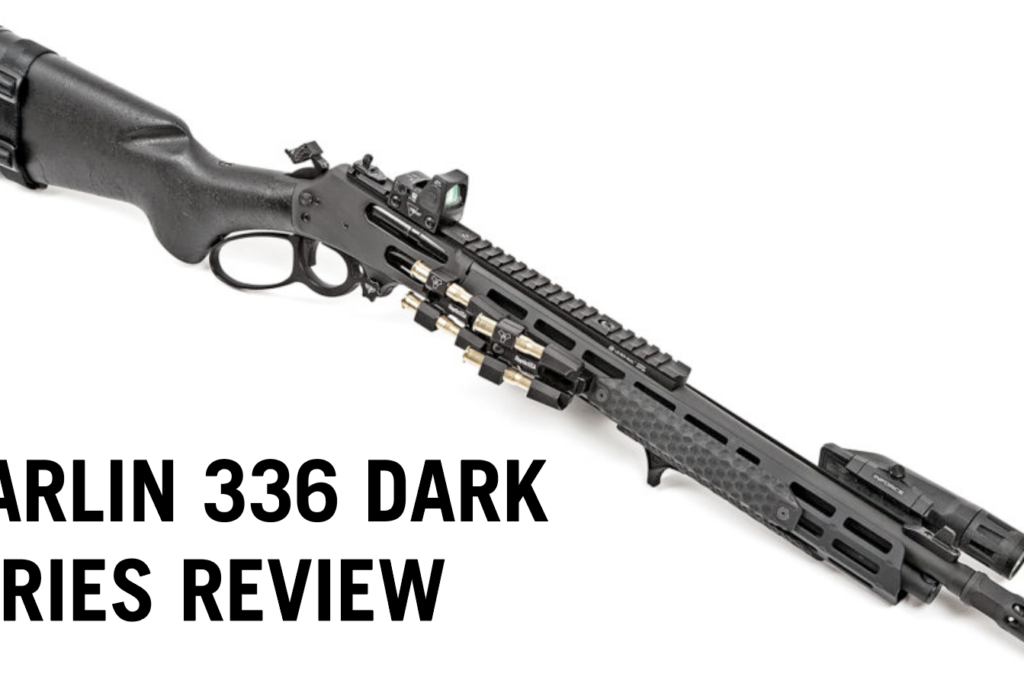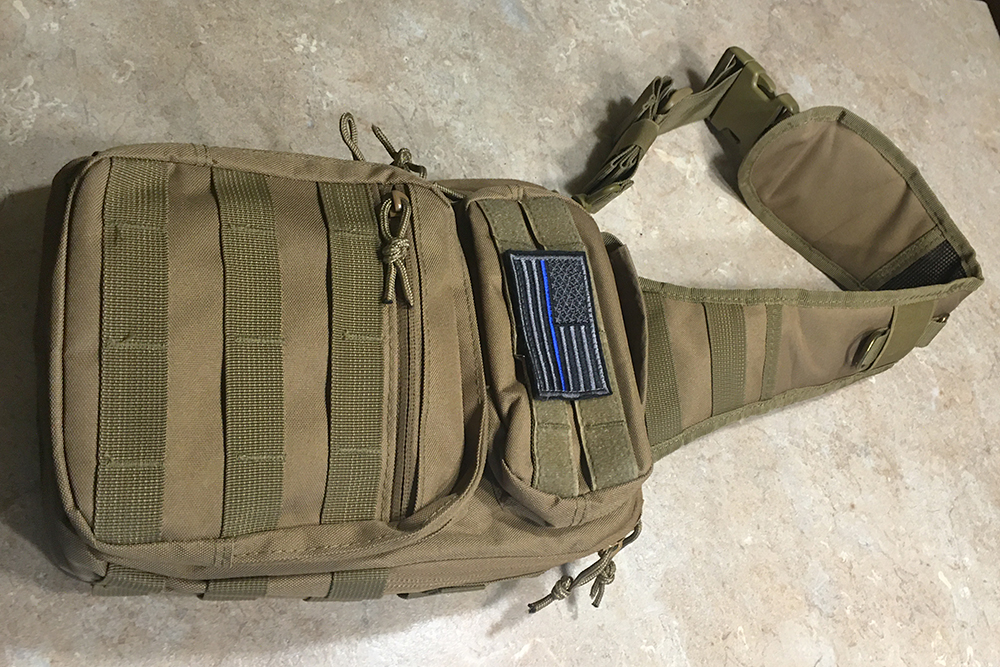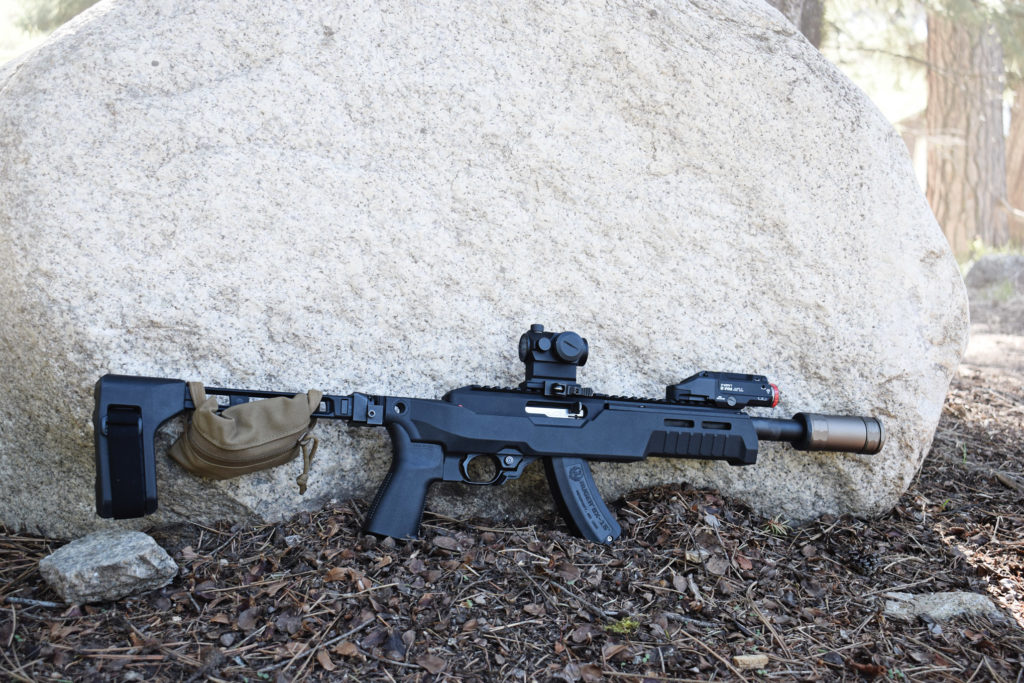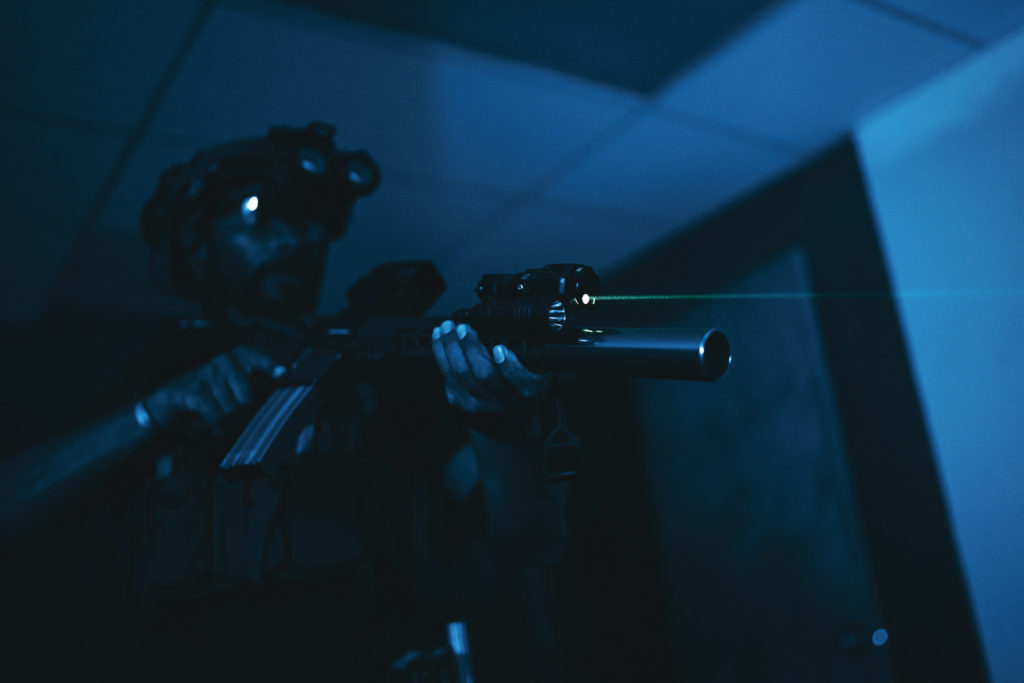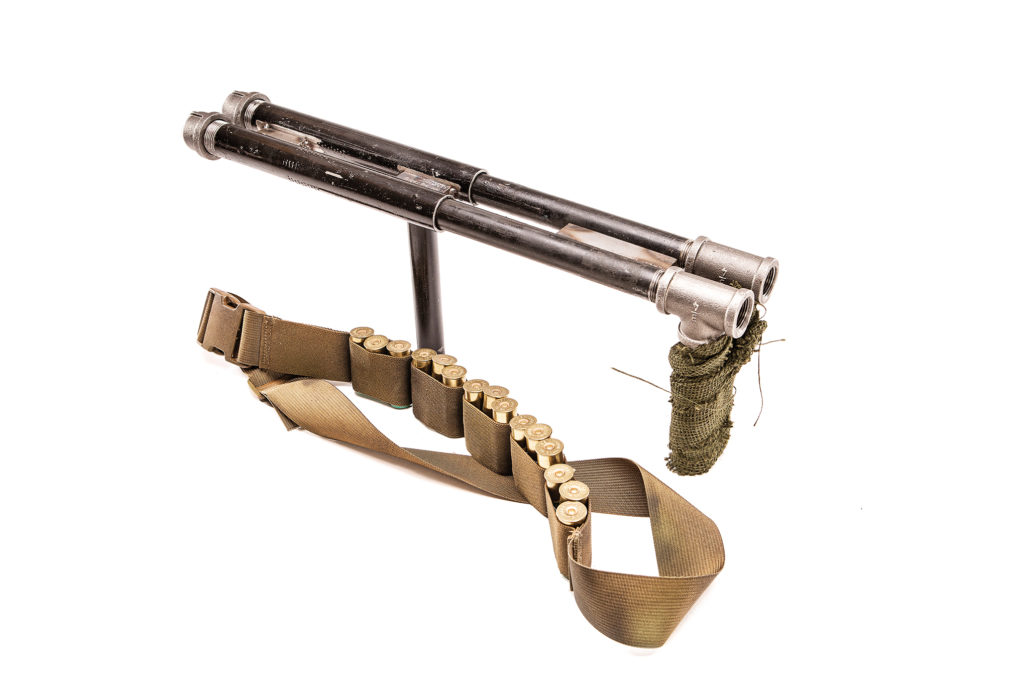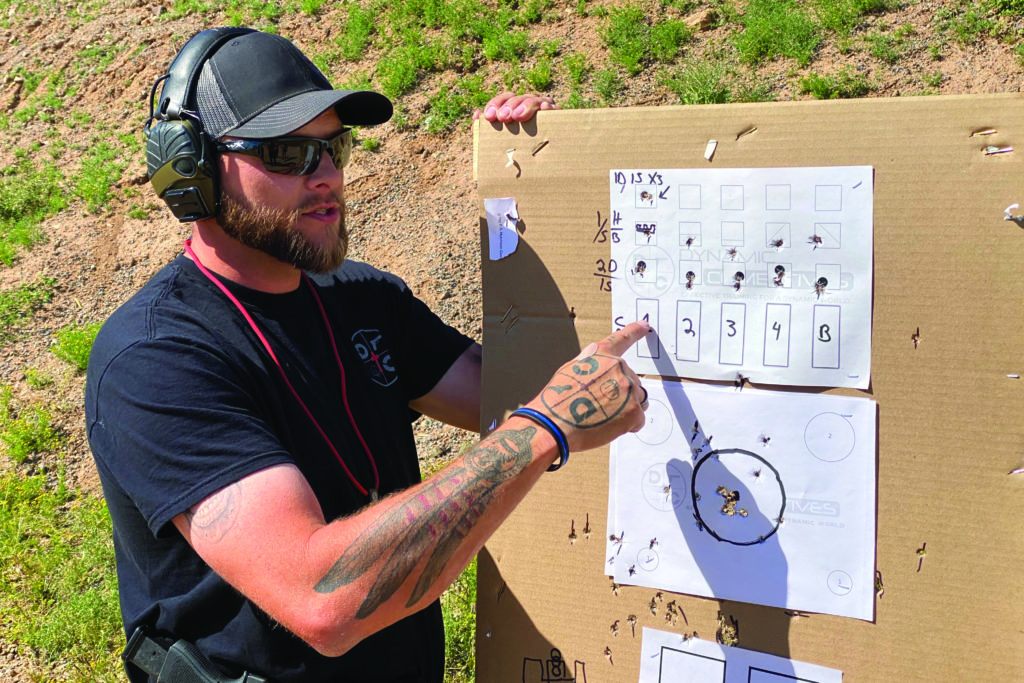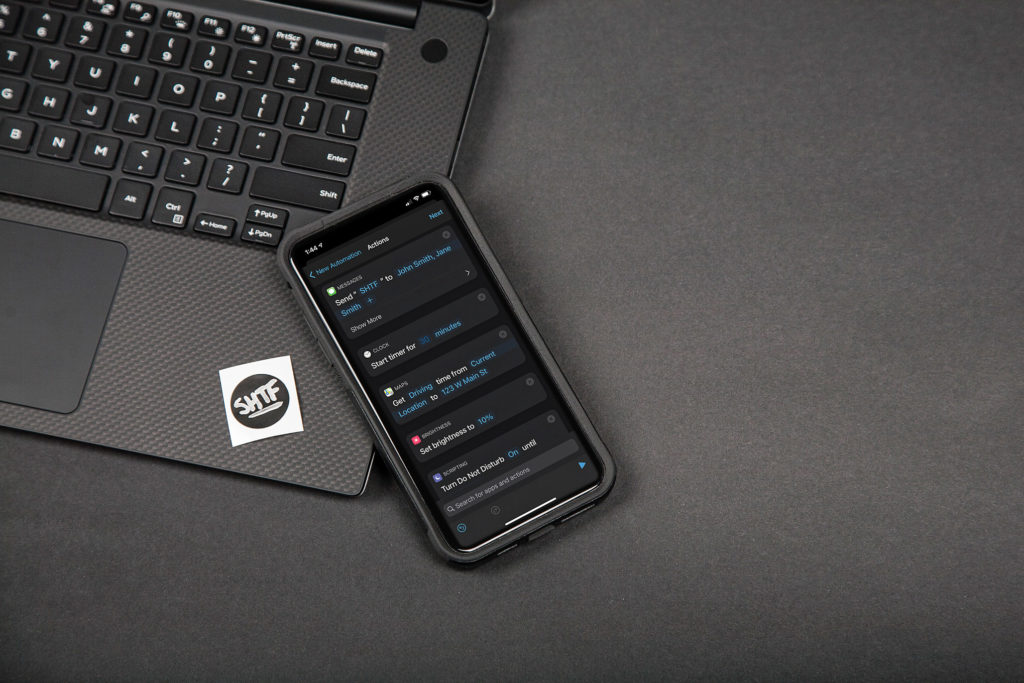Developing any skill takes continuous practice. It’s only natural that someone who runs a mile daily will get in shape far faster than someone who does it a few times a month. Shooting is no different. However, due to ammo cost, weather, and other factors, many of us aren’t able to do as much live-fire practice as we’d like. Dry fire at home is beneficial, but it doesn’t come close to the experience of shooting live rounds. A simulator — such as Range Time in Phoenix, Arizona — can offer a much better analogue at a fraction of the cost.
We’ve tested indoor shooting simulators in the past, such as the multi-million-dollar VirTra system at Haley Strategic (see Issue 43). That panoramic setup can recreate lifelike self-defense scenarios, from active shooters to muggings to home invasions, but sessions in that sim aren’t easy to come by — classes are booked weeks in advance, limited to five students, and cost $900 for a two-day course.
Above: In addition to four simulator bays for on-site training, Range Time’s Arizona facility contains an FFL storefront with guns, ammo, parts, and gunsmithing services.
Range Time, in Phoenix, Arizona, has taken a different approach with its indoor shooting simulator. Rather than cater to a hardcore, deep-pocketed subset of the gun community, they set out to make simulator training accessible and affordable to all. An hour in the simulator costs $30, and you can shoot as much as you’d like without spending a dime on ammo. Walk-ins and reservations are both accepted. Various common pistols and rifles are available to rent; each is a real firearm retrofitted with CO2 blowback internals and an infrared laser in place of the barrel.
After learning about the Range Time facility, I was interested to give it a try. If you’ve been following this column, you’ll know I’m an intermediate shooter who trains regularly under well-known instructors. So, would this affordable simulator be nothing more than a novelty, or would I be able to use it to improve my live-fire performance?
After visiting Range Time, I quickly established a rapport with in-house instructor Nate Gerhart. He provided pointers and recommended various drills, such as my ongoing benchmark, “Lateral Thinking.” This consists of 16 numbered squares laid out randomly in a grid; the goal is to shoot them in ascending order as quickly as possible. Click here for a video demonstration.
Above: Difficulty for each drill can be adjusted within the simulator by changing target size and sequence (ascending, descending, even, odd, etc.), or by randomly adding no-shoot targets that must be skipped. If that’s not enough, try shooting one-handed or while holding up a 50-pound kettlebell.
A 20-second time is reasonable for a beginner, 10 seconds is good for an intermediate skill level, and 7 seconds or less is considered competitive. Starting out, I my best time was 11.1 seconds, but I decided to make a Range Time session part of my weekly routine and chip away at that time.
Over the course of the following three months, I continued one-on-one training for an hour each week. Inside the simulator, I worked on fundamentals, target transitions, tracking movement, strong-side and weak-side one-handed shooting, reloads, and footwork. I shot pistols with iron sights and red dots as well as carbines. I started from various positions and from behind cover. I practiced drawing from concealment and from my range belt. At times, this felt like drinking from a fire hose, but Nate’s patient instruction kept me determined to push onward.
Above: My results for the Lateral Thinking drill served as an indicator of steady improvement as the weeks and months passed. This drill places strong emphasis on a shooter’s ability to quickly assess a scene and transition between targets.
These weekly Range Time simulator sessions soon produced the results I had hoped for. My best time in the Lateral Thinking benchmark dropped to 6.7 seconds, with average times comfortably in the 7-to-8-second range. More importantly, the improvements went beyond the simulator. I recently started competing in local pistol matches, and have seen noticeable increases in my live-fire precision and consistency. When these matches throw a curveball, such as one-handed shooting or a table start, I’m ready for it.
Although some shooters will always write off simulator training as gamer nonsense, I have gradually become a believer in its effectiveness. Of course, this type of training is what you make it — you can learn nothing by dumping mags at the screen like you’re playing The House of the Dead, or you can take it seriously and reap the benefits. In my case, the results speak for themselves, and Range Time sessions will continue to be a regular part of my training routine.
For more information on the Range Time shooting simulator, go to rangetimellc.com or follow @rangetime2020 on Instagram.
Related Posts
The post Range Time Review: Simulated Shooting, Real Results appeared first on RECOIL OFFGRID.


